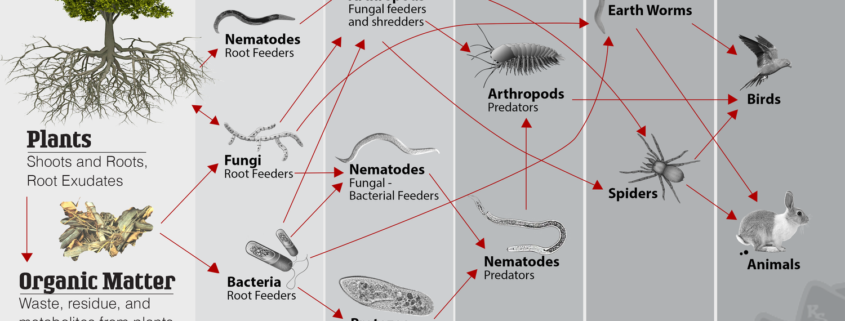How Soil Biology Make Nutrients Available To Plants
Soil biology plays a crucial role in making nutrients available to plants through various processes. Here are some key mechanisms by which soil biology facilitates nutrient availability:
- Decomposition: Soil microorganisms, such as bacteria and fungi, break down organic matter, such as dead plant and animal material, into simpler forms through decomposition. This process releases nutrients, such as nitrogen, phosphorus, and potassium, from organic compounds and makes them available for plant uptake.
- Mineralization: Soil microorganisms convert organic nitrogen, present in the form of proteins or other complex compounds, into inorganic nitrogen compounds, such as ammonium (NH4+) and nitrate (NO3-). This mineralization process releases nitrogen in a form that plants can readily utilize.
- Nitrogen fixation: Certain bacteria, known as nitrogen-fixing bacteria, have the ability to convert atmospheric nitrogen gas (N2) into a form that plants can use, primarily ammonium. These bacteria form symbiotic relationships with leguminous plants (such as beans, peas, and clover) or exist free-living in the soil, contributing to the nitrogen content of the soil.
- Mycorrhizal associations: Mycorrhizal fungi form mutualistic associations with plant roots, creating mycorrhizae. These fungi extend their hyphae (fine filaments) into the soil, greatly increasing the surface area for nutrient absorption. In return, the fungi receive sugars and other organic compounds from the plant. Mycorrhizal associations enhance the uptake of nutrients, especially phosphorus, by the plant.
- Nutrient cycling: Soil microorganisms are involved in the cycling of nutrients within the soil ecosystem. They decompose organic matter, release nutrients, and facilitate the transformation of one nutrient form to another. For example, bacteria convert ammonium into nitrate through nitrification, while other bacteria carry out denitrification, converting nitrate back into nitrogen gas and completing the nitrogen cycle.
- pH regulation: Some soil microorganisms influence soil pH by producing organic acids or other compounds. This pH regulation can affect nutrient availability since different nutrients are more or less accessible to plants depending on the soil pH. For example, acidic soils often have limited availability of phosphorus, while alkaline soils may limit the availability of micronutrients like iron and zinc.
These processes and interactions among soil organisms contribute to the complex web of soil biology, which ultimately supports the release and cycling of nutrients, ensuring their availability for plant growth and development.



